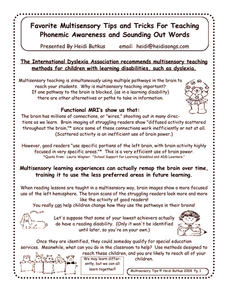Curated OER
Summing up Winter!
Young scholars review the concept of silent reading. Through modeling and guided practice, they follow four given steps in summarizing the beginning of a written passage. Then they continue to read the passage independently and follow...
Curated OER
In Your Own Words...
Students discuss the importance of comprehension and the use of summarization. Through guided practice, they summarize given paragraphs. Independently, they read an article and highlight information that they believe is very important....
Curated OER
That Sums It All Up!
Students review the concept of silent reading. They listen to a story and create a story map of what they hear. Then, they read their own story and map it the same way. This time, they use this story map to write a summary of what they...
Curated OER
Island of the Blue Dolphins
This literature study PowerPoint summarizes the main story elements of the book, Island of the Blue Dolphins. Students read about the the theme, setting and events. There are also a few slides where students complete various interactive...
Curated OER
What's Important?
Students, through teacher modeling and guided practice, explore four steps/rules of summarizing. In groups, they read a short passage and then, by applying the summarization rules and skills, write an effective summary of it.
Curated OER
READING COMPREHENSION: KRISTALLNACHT
Eighth graders explore the persecution of the Jews during Hitler's leadership of Germany in 1938.
Curated OER
Phineas Gage: Questioning Strategy
Focus on chapter two of Phineas Gage: A Gruesome but True Story About Brain Science with a questioning activity. After teaching and modeling several types of questions, learners work with partners and then independently to answer and...
Sunburst Visual Media
Clouds
Support science instruction with a combination of engaging activities and skills-based worksheets that focus on clouds. Learners take part in grand discussions, write an acrostic poem, complete graphic organizers, solve word...
Curated OER
Phonemic Awareness and Sounding Out Words
Although designed for children with learning disabilities, such as dyslexia, the multi-sensory tips and tricks included in this illustrated eight-page packet are designed to develop phonemic awareness and are appropriate for any classroom.
Curated OER
Tell Me All About It!!
Students discuss the importance of comprehension and the use of summarization. Through guided practice, they follow five steps in finding and highlighting important information, while deleting information that is not needed. Using the...
Curated OER
Short But Important
Students review the concept of silent reading. They listen to an article and, through guided practice and modeling, create a concept map of what they hear. Then, in groups of two, they read another article on their own and map it the...
Curated OER
Sum It Up to Learn the Most!
Students review the concept of silent reading. Through modeling and guided practice, they follow six given steps in summarizing a written passage. Then they read a passage independently and follow the same steps in summarizing the...
Curated OER
Wanted: Only the Facts!
Students apply three steps to summarizing successfully (delete trivial and redundant material, replace superordinate terms with a list or action term, and invent a topic sentence.) Through guided practice, they follow these rules in...
Curated OER
Summin' It All Up
Students, through teacher modeling and guided practice, explore the five steps/rules of summarizing. Independently, they read a short article and apply the summarization rules and skills (picking out key words, main points, etc.) to...
Curated OER
Simple Steps to Sum It Up!
Students review six steps to follow to correctly summarize a written passage. Through modeling, guided and independent practice they distinguish between unimportant and important information and summarize an article using these steps.
Curated OER
South Carolina Voices: Lessons from the Holocaust
Learners read and summarize two different articles that are based on anit-Semitism. In this Holocaust lesson, students discuss if events in the articles could happen in today's society or not.
Curated OER
Memories, A Connection to the Past
Students read four or more books. They make predictions before reading, complete a picture walk, read in partners and complete graphic organizers. Various graphic organizers are provided in English and Spanish.
Curated OER
Biology: New Trials & Findings
Students use background knowledge to summarize articles about skin cancer research and present them to the class and place their studies along a clinical study timeline. They are introduced to clincal trails and to various aspects of...
Curated OER
What Do We Owe To Thoreau?
Students use this design as an electronic reading and writing guide to Henry David Thoreau's famous essay, "On Civil Disobedience." They use activities to familiarize students with the political issues of Thoreau's time. Comprehension...
Curated OER
How Many People Live in Your Household?
Students create a pictograph showing household size for the class.In this data collection and graphing lesson, the teacher guides students through the creation of a concrete object graph, then students analyze and summarize the results.
Curated OER
The Legend of Sleepy Hollow
Students discuss and define folklore, locate town of Sleepy Hollow, NY, on map, calculate distance from Sleepy Hollow to their school, if applicable, review vocabulary list from The Legend of Sleepy Hollow, read story aloud, and write...
Curated OER
5 W Questions
Second graders practice asking the 5 W questions by reading a Boxcar Children book. In this journalism lesson, 2nd graders read a single story from the Boxcar Children series and answer the 5 W's about each specific chapter....
Curated OER
Lessons from the Holocaust
Students investigate the horrors of World War II by participating in a role-playing activity. In this holocaust lesson plan, students read handouts describing the atrocities committed against the Jews in Germany during the mass...
Curated OER
Browning's "My Last Duchess" and Dramatic Monologue
Learners read and analyze the poem, "My Last Duchess," by Robert Browning. They examine the use of dramatic monologue as a poetic device, and write a character profile of the Duke.























